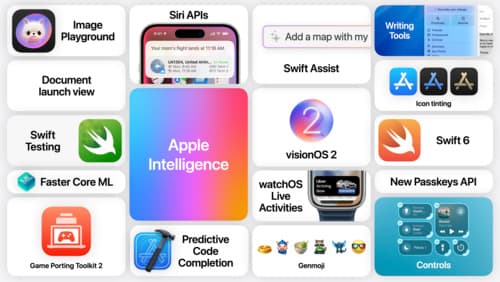How do I get started building apps for the Vision Pro?
Asked on 2024-07-31
1 search
To get started building apps for the Vision Pro, you can follow these steps:
-
Use the VisionOS SDK: Start by adding VisionOS as a supported destination in your app's build settings. This can be done by selecting the iOS target and adding Apple Vision as a supported destination. This will allow you to compile your app for VisionOS. You might encounter some compilation errors, but if your app was originally made for iOS, most of the code should compile. For more details, you can refer to the session Bring your iOS or iPadOS game to visionOS.
-
Explore Apple's Human Interface Guidelines: These guidelines are a living documentation of the latest best practices for VisionOS. They can help you understand patterns and components specific to VisionOS. You can find more information in the session Design great visionOS apps.
-
Utilize Native Frameworks: Consider using native frameworks like ARKit and RealityKit to take full advantage of the device capabilities. This will help you build and test ideas to learn how your apps will best excel on VisionOS. For more insights, check out the session Design great visionOS apps.
-
Inspect and Debug: You can inspect DOM content, CSS rules, and use the JavaScript console for inspecting code-intensive experiences like WebXR. This can be done using the Web Inspector in Safari when your Vision Pro and Mac are connected to the same network. For more details, refer to the session Optimize for the spatial web.
-
Leverage Samples and Documentation: Apple provides samples and documentation to help you get started with spatial computing on VisionOS. This includes examples of how to recompile iOS and iPadOS apps to run on VisionOS and extend them for spatial computing. You can find more information in the session Platforms State of the Union.
By following these steps and utilizing the resources provided by Apple, you can start building your own VisionOS apps and take advantage of the exciting opportunities in spatial computing.

Get started with HealthKit in visionOS
Discover how to use HealthKit to create experiences that take full advantage of the spatial canvas. Learn the capabilities of HealthKit on the platform, find out how to bring an existing iPadOS app to visionOS, and explore the special considerations governing HealthKit during a Guest User session. You’ll also learn ways to use SwiftUI, Swift Charts, and Swift concurrency to craft innovative experiences with HealthKit.

Platforms State of the Union 5-Minute Recap
Watch a quick recap of the newest advancements on Apple platforms.

Optimize for the spatial web
Discover how to make the most of visionOS capabilities on the web. Explore recent updates like improvements to selection highlighting, and the ability to present spatial photos and panorama images in fullscreen. Learn to take advantage of existing web standards for dictation and text-to-speech with WebSpeech, spatial soundscapes with WebAudio, and immersive experiences with WebXR.
